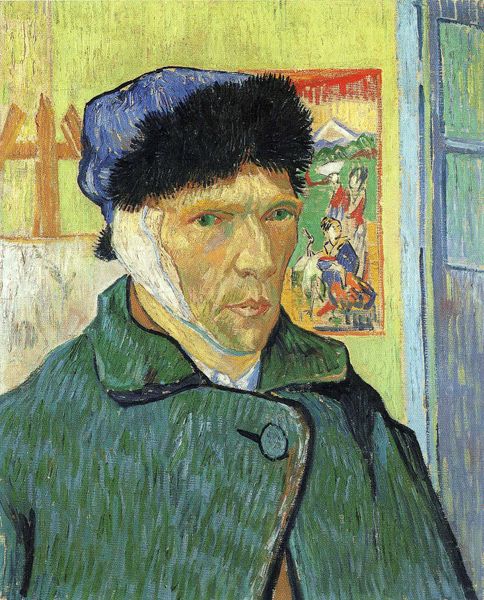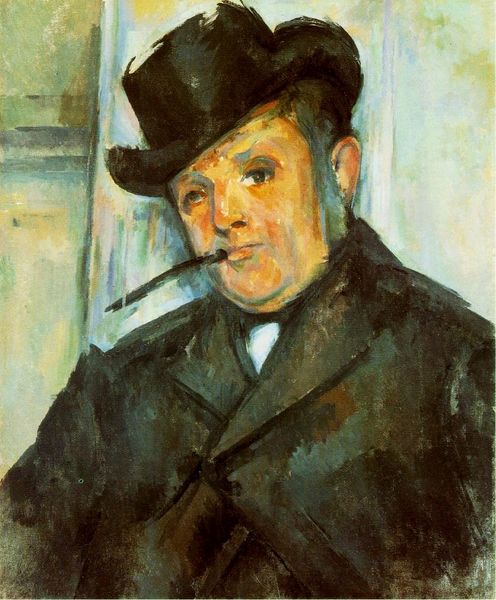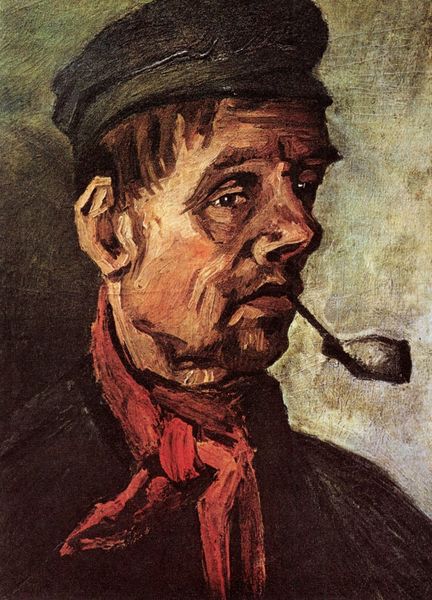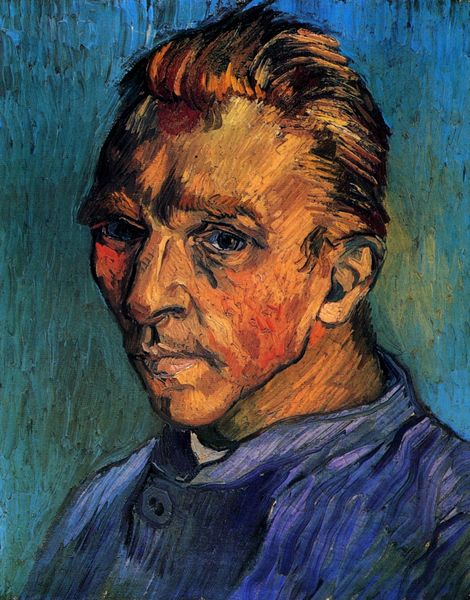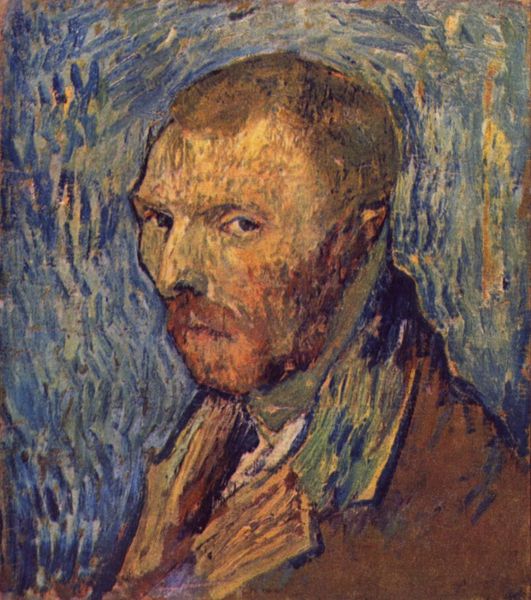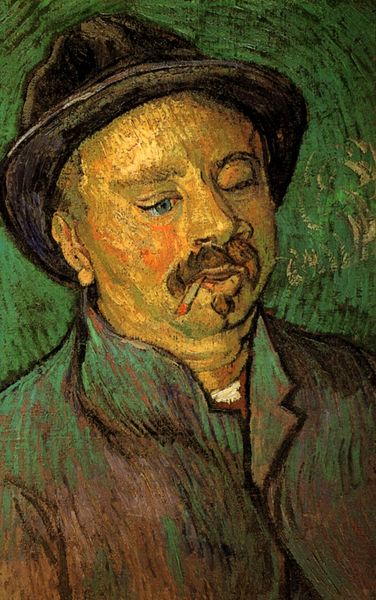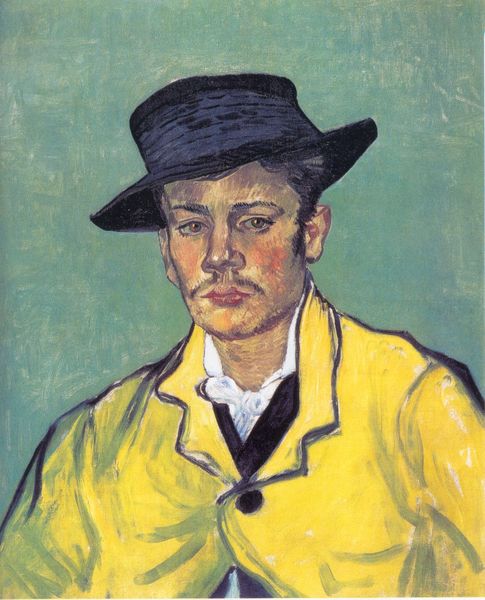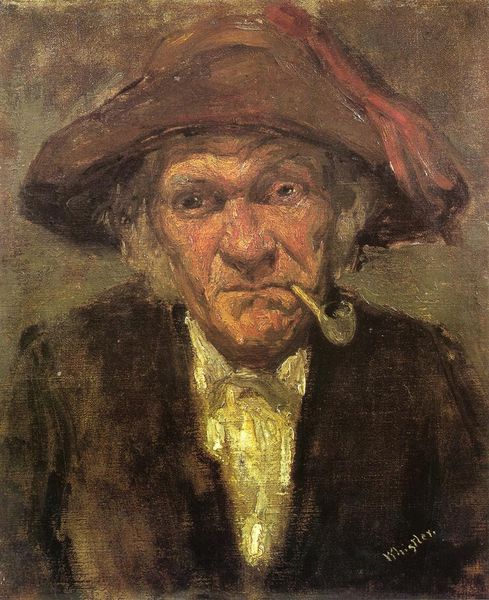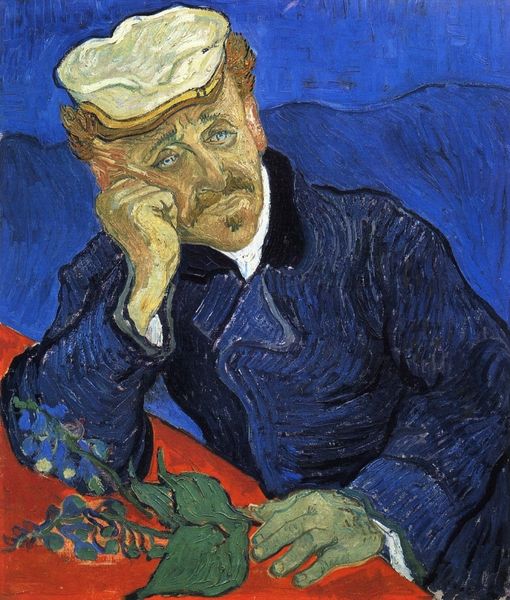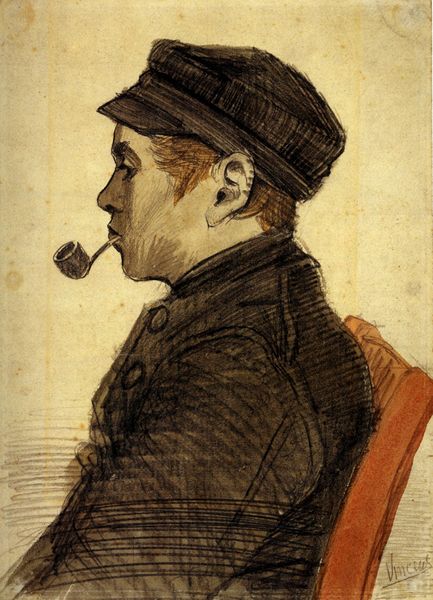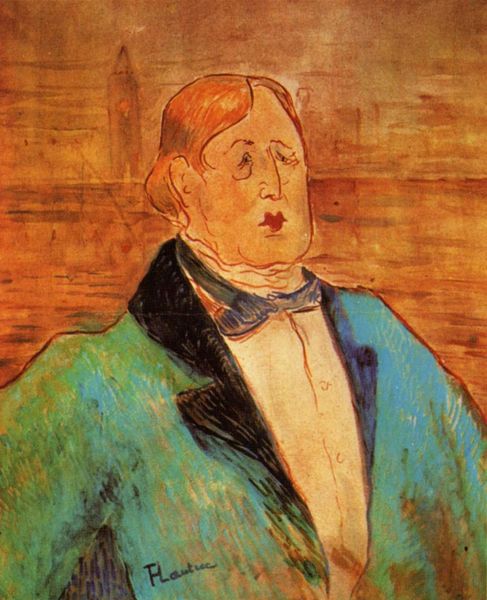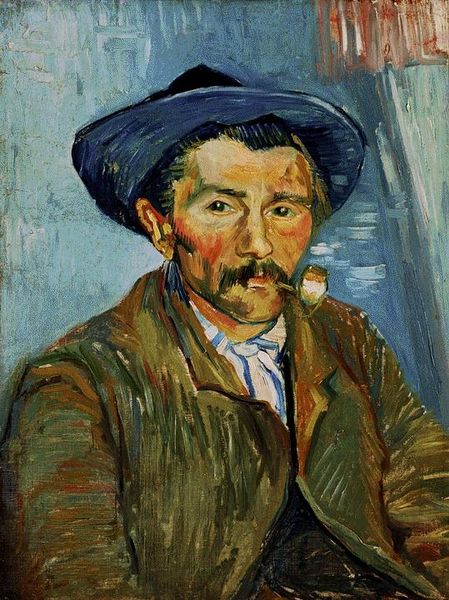
Dimensions: 51 x 45 cm
Copyright: Public domain
Curator: Today, we are considering Van Gogh’s "Self-Portrait with Bandaged Ear", rendered with oil paint in 1889. It's a striking and deeply personal piece from his post-impressionist period. Editor: My immediate feeling is of stoicism, or perhaps a pained resolve. The bandaged ear, the controlled brushstrokes, the rising smoke... It all creates a scene of self-imposed quiet. Curator: The self-portrait speaks to his mental and emotional state after the infamous incident in Arles. It confronts notions of madness, and even genius, that have historically been applied to the artist and to others outside of societal norms. Consider the power dynamics implicit when making visible such vulnerability. Editor: The bandage itself becomes a loaded symbol, doesn’t it? Not just of physical injury, but of internal struggle and suffering. White often signals purity, or blankness—here, perhaps an attempt to conceal something messy, to create order in chaos. The pipe offers comfort but also clouds the air. Curator: Indeed, objects within the composition are carefully curated, or maybe better stated, symbolic surrogates of mental space and gender. The pipe could point towards masculinity under duress but also provides self-soothing that crosses gender divides. And note the juxtaposition of the soft fur cap with the stiffness of the jacket. What tensions can we extract from that opposition? Editor: Thinking visually, the colour choices strike me too. The fiery orange background contrasts intensely with his pale skin and the dark greens and blacks. The orange might symbolise the feverish intensity he was known for. It’s as if his inner turmoil is projected outward onto the canvas. Curator: That interplay between the inner self and the social exterior is central to the work. What happens when we display intimate portrayals? What does this reveal about who Van Gogh may have become during the course of the gaze? And how do viewers today connect with, interpret, and at times judge mental and emotional distress based on visual cues such as the bandaged head and the pipe? Editor: This image lingers. It speaks to broader notions about fragility and inner states. To contemplate such a self-conscious and vulnerable rendition is something unforgettable. Curator: Van Gogh’s willingness to confront and visualize pain makes for powerful social and individual introspection. It is a great entry point for broader societal change, and, possibly, self-reflection.
Comments
No comments
Be the first to comment and join the conversation on the ultimate creative platform.
